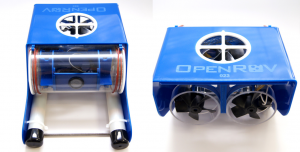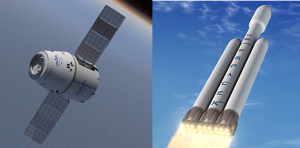Agriculture Update: Robots on the Farm
Blue River Technology, a Stanford University start up, has developed a robotic system that can differentiate a weed from surrounding crops. The device gets pulled by a tractor and includes a camera and computer working together to categorize plants determining which is a desirable plant from that which is not. Once a weed is identified the robot sprays the plant with drops of hot pressurized oil to kill it. The technology has the potential of being used for other applications such as harvesting.

Climate Change Update: We Can Learn a Lot from Past Civilization Failures
This week archaeologists, geologists, mathematicians and geomorphologists reported on the demise of the Indus River Valley civilization, known as Harappan, that flourished until 4,000 years ago and then vanished. Using topographical, field sampling and archaeological data the scientists traced the 10,000 year history of human occupation of the Indus (located in modern Pakistan). At one point the Harappan civilization covered an area just a little smaller than the State of Alaska. It flourished for almost 6 centuries and then vanished. Why? Because it was a “Goldilocks civilization” relying on the monsoon cycles and local rivers to sustain its agricultural wealth. But the climate became more arid and the monsoons failed. Within a century the Harappan cities vanished along with their distinct writing system, artisans, and scholars. Could our dependence on fossil fuels or global warming lead our modern civilization to a similar end ?

Energy Update: The Consequences of a Nuclear Meltdown
A Japanese mobile phone manufacturer, Softbank, has launched a new model, the Pantone 5 107SH with a built-in radiation detector. Talk about events influencing design. Would we have ever considered building a Geiger counter into our cellphone before tsunami and subsequent meltdown of the Fukushima Daiichi nuclear reactor?

Inner Space Update: Lunchbox Sized Multipurpose Submarine Means Almost Anyone Can Do Science in the Ocean
You too can build a submarine for doing underwater exploration. All you have to do is buy an OpenROV kit plus software, build your submarine, upload the software to both it and your computer and you can become your own oceanographic research centre. A do-it-yourself telerobot, OpenROV comes prebuilt or as an easy-to-assemble kit along with two separate software programs. The design is constantly being influenced by the user community because OpenROV is open source. The goal is to make underwater exploration and research accessible to citizen scientists who can share their data and findings.

Space Update: Several Firsts for SpaceX All in One Week
Last week SpaceX Dragon capsule docked with the International Space Station, the first commercial spacecraft to accomplish this feat. Described as a demonstration flight to test out the systems developed by the California-based private company, Dragon and the Falcon rocket, its launch vehicle, performed flawlessly. Later in the week after Dragon detached from the station it returned to Earth with a successful splashdown in the Pacific Ocean within sight of recovery ships. Previous to this all supply vehicles bringing materials to the space station upon return to Earth burned up in the atmosphere. Dragon, however, is designed to ferry materials both to and from the station, the first unmanned craft to do so.
In the same week, SpaceX and Intelsat signed a commercial agreement to use the Falcon Heavy rocket as a primary launch vehicle for deploying telecommunication satellites. Falcon Heavy is currently being developed by SpaceX with plans for an initial test flight as early as this year. It will be the most powerful chemical rocket in the world when it launches with the capacity to deliver 53 metric tons into low-Earth orbit. Only the Saturn-1 of the Apollo era was bigger. The Falcon Heavy will have 2-1/2 times the payload capacity of Russia’s Proton launchers and Europe’s Ariane-5.
















